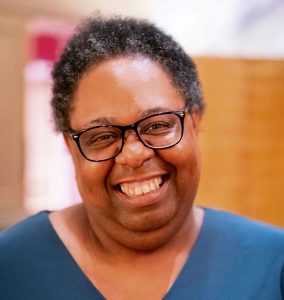
After more than 35 years of operation, TBI is closing its doors and our website will no longer be updated daily. Thank you for all of your support.
Opinion: Why senior leadership buy-in is not enough when it comes to diversity
Deborah Williams, executive director at the UK’s Creative Diversity Network, asks why diversity in the UK TV industry is stalling despite senior leadership buy-in.
Over the last year it’s been quite challenging to try and understand why things are stalling on the diversity front in the UK television industry.
Everyone wants change. They want more diversity and more inclusivity. But as Creative Diversity Network (CDN) publishes our sixth annual Diamond report, it’s clear we are not where we should be. We are not even close to being where we should be.
Women in particular appear to be going backwards in representation, particularly in senior roles, and are now below the minimum benchmark level we set for ourselves.
South East Asian representation is still woefully low even though there has been progress – mainly onscreen – for black, mixed and other minority ethnic groups.
So what is going wrong?
We have top level executive buy in. Budgets are set aside; industry leaders commit to whole programmes of activity. They hire experienced dedicated people who have expertise in, across and around the whole diversity and inclusion agenda, and delegate responsibility to them to carry out the work.
But there is something preventing this activity from being as successful as it should be with all this goodwill, and money, behind it.
In my experience there is a group of senior managers in more traditional business roles – perhaps IT, business affairs or finance – who still find diversity a challenge when it comes across their desk and a reality in their daily work.
They find it difficult to integrate into their work and then those who are trying to carry out this programme of creating a more inclusive industry find they are on the receiving end of their anxiety, misunderstanding or misapprehension that their roles will somehow be defunct or that as individuals they are no longer seen as the right fit for a different kind of workplace.
Sone navigate through it, they up skill and lean in. They focus on diversity as a critical business and life opportunity. Others can’t take it; they exit stage left – pursued by a great redundancy package – or so I read/hear.
Then there is a last group. The ones who believe wholeheartedly that it’s wrong. That it’s a fad or worse that it needs fixing, so it fits into their way of doing things. They have got to their mid-senior perch by doing it the old way, the non-inclusive way. The system for them isn’t broken, so why the need to fix it?
They elicit fights out of imagined problems. They drive for everything to be done their way even when it’s obvious that interventions and processes are proving successful, impactful and delivering the change that their leaders have asked for and which their colleagues are working so hard to make happen.
Their behaviour is holding back innovation, creativity and growth – and ultimately a successful future for our industry.
Leaning in & learning
As we age, we have to accept that with our wisdom comes great responsibility. We have to get out of the way. Learning to lean into change is hard. But it’s necessary. The data tells us so.
I’m not going to say that simply having more females in senior roles or at even at our stated benchmark levels will automatically lead to wider female representation in the industry. But I say it’s worth a try. Stepping out of the way is easier than you think, and the benefits will ripple way beyond anything you image.
So my plea is let us get on with our work even if you don’t buy into it personally. And if you do, then join us and see what opportunities it can open up for everyone.
To paraphrase John and Yoko, all I’m saying is, ‘Give change a chance’.
Deborah Williams is executive director at the UK’s Creative Diversity Network (CDN) and has worked in arts, culture and the creative industries for more than three decades.



